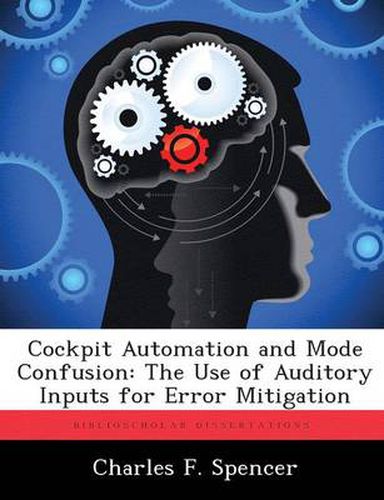Readings Newsletter
Become a Readings Member to make your shopping experience even easier.
Sign in or sign up for free!
You’re not far away from qualifying for FREE standard shipping within Australia
You’ve qualified for FREE standard shipping within Australia
The cart is loading…






This title is printed to order. This book may have been self-published. If so, we cannot guarantee the quality of the content. In the main most books will have gone through the editing process however some may not. We therefore suggest that you be aware of this before ordering this book. If in doubt check either the author or publisher’s details as we are unable to accept any returns unless they are faulty. Please contact us if you have any questions.
The application of computer technology in modern cockpits has resulted in sophisticated automation that has created situations of mode confusion where the pilot is uncertain about the status or behavior of cockpit automation. Based on current levels of cockpit automation, classifications of mode confusion, and clinical knowledge concerning human cognitive and attentive processes, could an audible attention step help mitigate unrecognized mode error? The Software-Hardware-Environment-Liveware model forms a framework for the analysis of government and academic research concerning pilot automation experiences and use, cognitive models, information and decision processing, and the auditory attention channel. Pilot experiences and several aircraft accidents suggest that mode error is both common and potentially dangerous enough to warrant attempts at mitigation. Studies indicate that the monitoring requirement levied by automation lowers pilot system situational awareness without providing sufficient or proper feedback. Operators can also suffer from cognitive lockup and task channeling, which makes attention diversion difficult. An auditory input might provide an effective attention step if it demands appropriate attention, provides situation reporting, and offers problem guidance.
$9.00 standard shipping within Australia
FREE standard shipping within Australia for orders over $100.00
Express & International shipping calculated at checkout
This title is printed to order. This book may have been self-published. If so, we cannot guarantee the quality of the content. In the main most books will have gone through the editing process however some may not. We therefore suggest that you be aware of this before ordering this book. If in doubt check either the author or publisher’s details as we are unable to accept any returns unless they are faulty. Please contact us if you have any questions.
The application of computer technology in modern cockpits has resulted in sophisticated automation that has created situations of mode confusion where the pilot is uncertain about the status or behavior of cockpit automation. Based on current levels of cockpit automation, classifications of mode confusion, and clinical knowledge concerning human cognitive and attentive processes, could an audible attention step help mitigate unrecognized mode error? The Software-Hardware-Environment-Liveware model forms a framework for the analysis of government and academic research concerning pilot automation experiences and use, cognitive models, information and decision processing, and the auditory attention channel. Pilot experiences and several aircraft accidents suggest that mode error is both common and potentially dangerous enough to warrant attempts at mitigation. Studies indicate that the monitoring requirement levied by automation lowers pilot system situational awareness without providing sufficient or proper feedback. Operators can also suffer from cognitive lockup and task channeling, which makes attention diversion difficult. An auditory input might provide an effective attention step if it demands appropriate attention, provides situation reporting, and offers problem guidance.